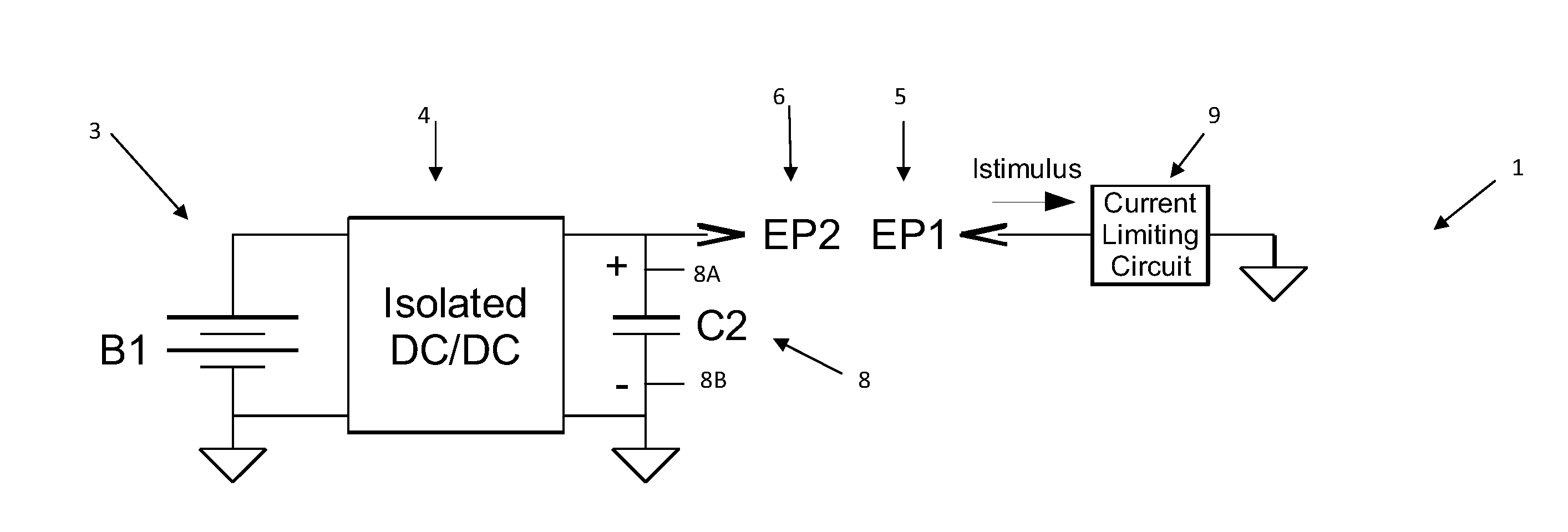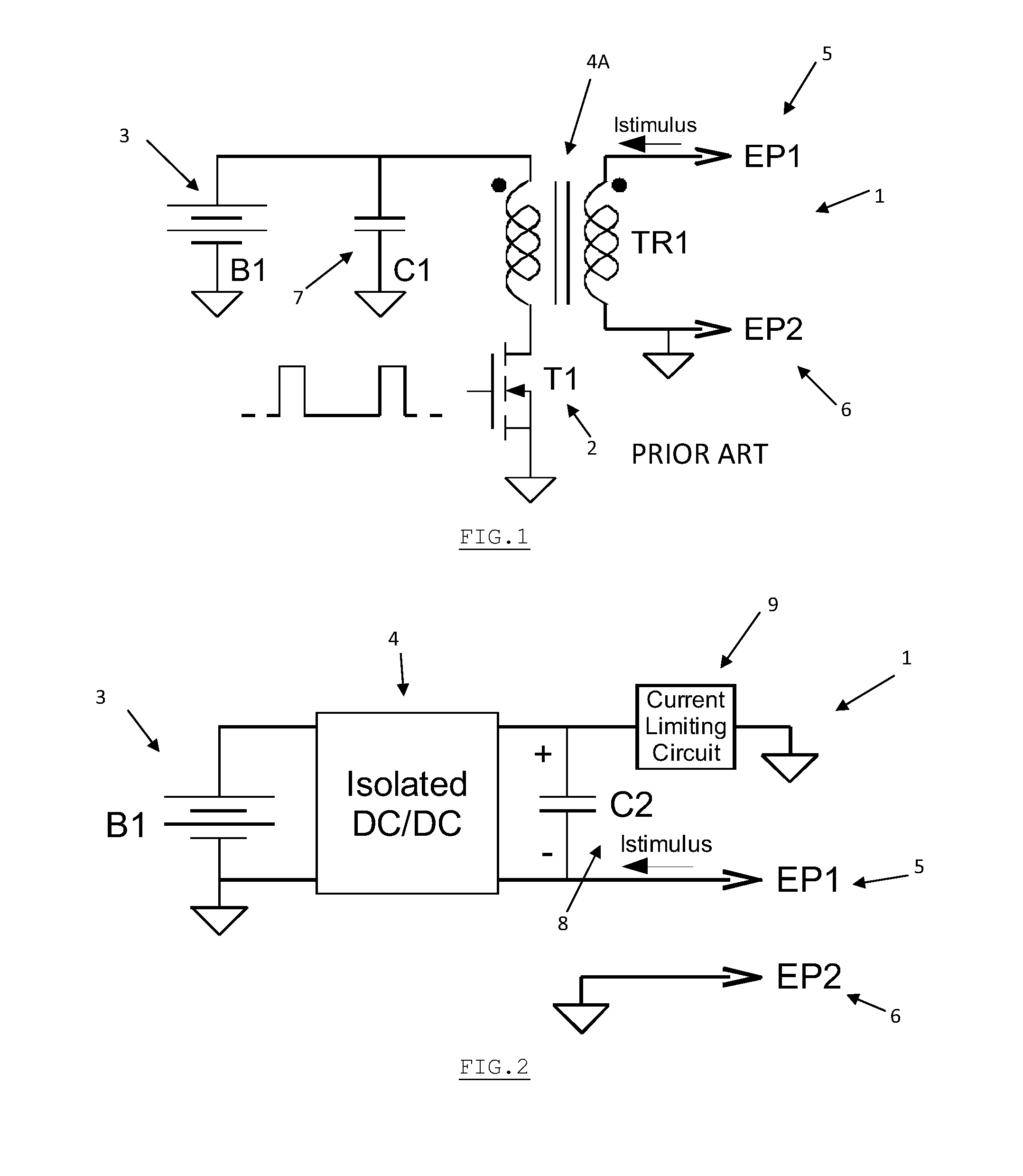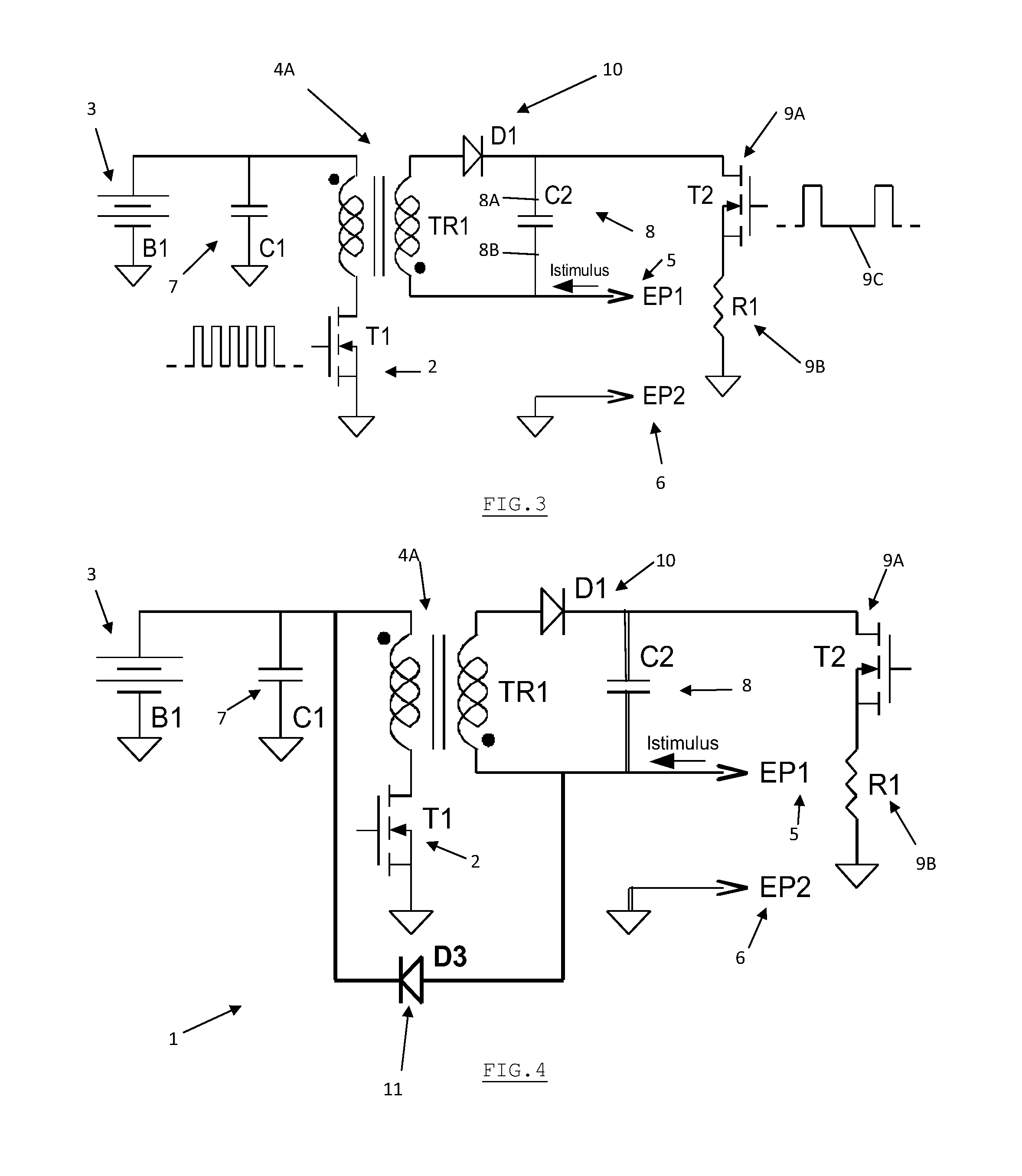High voltage circuit for electrical stimulation
a high-voltage circuit and electrical stimulation technology, applied in the field of modules, can solve the problems of large capacitors, inability to control the full current shape, and disallow the use of electrodes for other functions, such as battery charging, and achieve the effect of accurately controlling the shape of the stimulus current and charging capacitor 8 (c2) very quickly
- Summary
- Abstract
- Description
- Claims
- Application Information
AI Technical Summary
Benefits of technology
Problems solved by technology
Method used
Image
Examples
Embodiment Construction
[0049]The originality of the present invention lies in the idea of storing the stimulus energy in a capacitor instead of in a transformer and in the addition of a simple high voltage current limiting circuit to control the stimulus.
[0050]The present invention allows a tight control of the current meaning that the previous invention of EP 1 968 359 A1 is still fully applicable.
[0051]Adding extra electrodes is possible and only requires a limited number of small additional components.
Principle
[0052]In order to reduce the size of the transformer, the present invention thus proposes to store the energy of the stimulus pulse in a capacitor 8 (called C2) instead of a transformer (see FIG. 2). For the sake of the example, a 4,7 nF / 1000V capacitor can store up to 2.35 mJ but has dimensions of only 4.5 mm×2 mm×2 mm (to be compared with 20 mm×15 mm×15 mm as above).
[0053]In order to charge this capacitor 8 to 1000V starting from the 3V battery 3, a classical isolated DC / DC converter 4 is pro...
PUM
 Login to View More
Login to View More Abstract
Description
Claims
Application Information
 Login to View More
Login to View More - R&D
- Intellectual Property
- Life Sciences
- Materials
- Tech Scout
- Unparalleled Data Quality
- Higher Quality Content
- 60% Fewer Hallucinations
Browse by: Latest US Patents, China's latest patents, Technical Efficacy Thesaurus, Application Domain, Technology Topic, Popular Technical Reports.
© 2025 PatSnap. All rights reserved.Legal|Privacy policy|Modern Slavery Act Transparency Statement|Sitemap|About US| Contact US: help@patsnap.com



